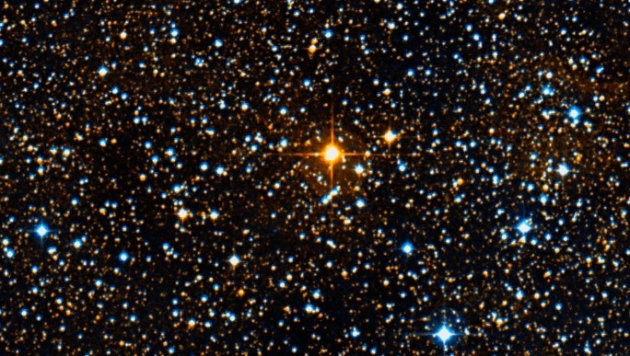Meet UY Scuti, the largest star in the universe
by Brendan Hesse
Looking
up at the sky inspires deep moments of introspection and curiosity.
It’s easy to feel small under a starry night sky, but in order to begin
to grasp just how small we truly are, we must know what our relative
size is compared to the larger celestial bodies of the Galaxy — and what
makes a better point of comparison than a star? Enter UY Scuti, a
bright red supergiant variable star that resides within the Scutum
constellation and is currently believed to be the largest star in the
Milky Way galaxy.
German astronomers originally discovered UY Scuti at
the Bonn Observatory in 1860, but it wasn’t until astronomers observed
UY Scuti through the Very Large Telescope in Chile’s Atacama Desert in
2012 that the star’s true size became well documented. Following this
discovery, UY Scuti was officially named the largest known star in the
galaxy, surpassing previous record holders such as Betelgeuse, VY Canis
Majoris, and NML Cygni.
While
there are stars that are brighter and denser than UY Scuti, it has the
largest overall size of any star currently known, with a radius of 1,708
± 192 R☉. That figure amounts to somewhere between 1,054,378,000 and 1,321,450,000 miles in size, which
is about 1,700 times larger than our Sun’s radius and 21 billion times
the volume. Wrapping one’s head around such number can be difficult, so
let’s break this down a bit.

From
our point of view, Earth is pretty big compared to the size of a single
human. But compared to even some of our close neighbors, our home is
incredibly tiny. Let’s imagine for a moment that the Earth were an
8-inch diameter ball. At that scale, the Sun would be about 73 feet in
diameter, which is a few feet more than the height of the White House.
Our enormous, distant friend, UY Scuti, would be 125,000 feet in
diameter, which is just a smidge under 24 miles. Remember that crazy
Redbull-sponsored stunt a few years ago performed by Felix Baumgartner,
who jumped from the outermost limit of Earth’s atmosphere back to the
surface? That was 24 miles in the air. Now imagine a sphere that large. That’s how big UY Scuti is.
So, what would happen if UY Scuti were to swap positions with our Sun? The Star would engulf the the entirety of Jupiter’s orbit, swallowing
the Sun, the first five planets of our solar system, and the asteroid
belt without so much as a belch. Some speculate the star may be even larger, enough
to surpass the orbit of Saturn. Not only that, but the UY Scuti’s
gravity would gobble up the larger planet and distant planetoids of our
solar system like a interstellar Pac-Man, and whatever remained
unconsumed would take thousands of years to complete a single orbital
rotation around the luminescent giant.
This video from Youtuber J Dude simulates what such an event would look like:
Hopefully, it’s beginning to sink in just how enormous UY Scuti is. We haven’t even touched the distance between us and the supermassive star — approximately 2.9 kiloparsecs, or 9,500 light years — but that’s a topic for another day.
It
must be stressed that we’re constantly exploring, observing, and
discovering new things about our galaxy and the trillions of celestial
bodies that populate it. It stands to reason that we could uncover yet
another, even larger star in the future. Our perspective, on a universal
scale, is infinitesimally small. Even if UY Scuti is the largest star
in the Milky Way, there could be enormous other stars in far away
galaxies that dwarf those of our own, somewhere within this
indescribably vast universe. Alas, we will may never know.

No comments:
Post a Comment